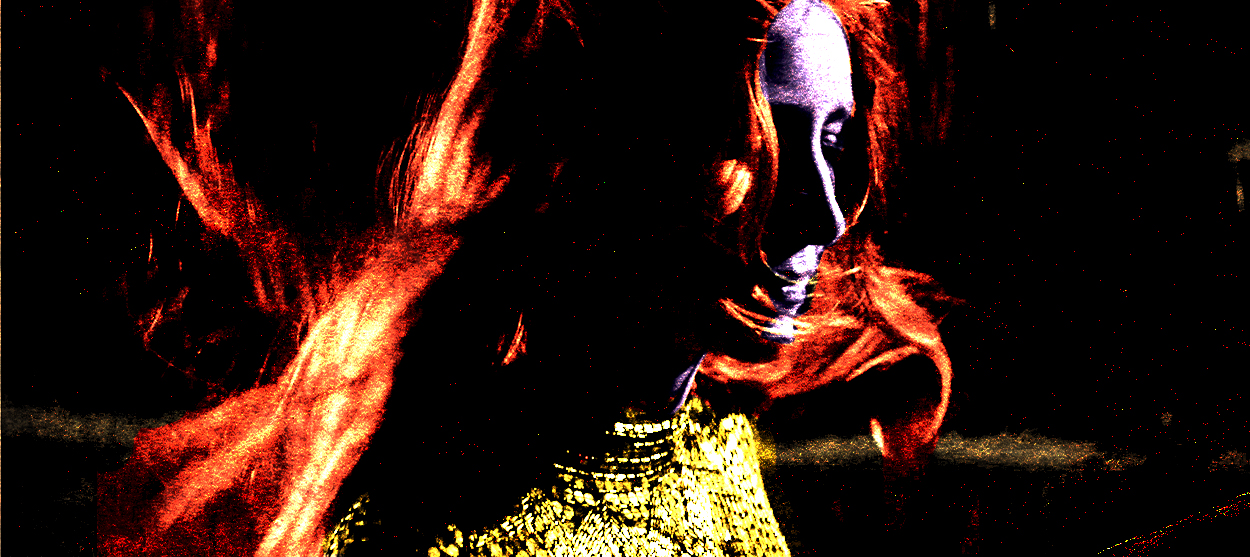The biggest trends from the first half of Sundance
Here's what filmgoers could be talking about in 2019


The Sundance Film Festival seems to arrive each year right when Oscar season is at its most exhausting, and when just about every potential Best Picture has been picked apart. Is Green Book inadvertently racist? Does Bohemian Rhapsody underplay Freddie Mercury's sexuality? Does Roma give its leading character enough agency? Enough is enough… Film buffs need something new to talk about.
The movies at this year's Sundance should be ripe for discussion all year long, given the high number of politically fiery films in the program — as well as all the work by women, foreign-born directors, and artists of color. Based on just the first five days of Sundance, here's some of what we could be talking about in 2019.
The home video dilemma
The Week
Escape your echo chamber. Get the facts behind the news, plus analysis from multiple perspectives.

Sign up for The Week's Free Newsletters
From our morning news briefing to a weekly Good News Newsletter, get the best of The Week delivered directly to your inbox.
From our morning news briefing to a weekly Good News Newsletter, get the best of The Week delivered directly to your inbox.
One of 2018's most talked-about Sundance titles was The Tale: writer-director Jennifer Fox's semi-autobiographical film about sexual assault and the slipperiness of our personal narratives. The movie quickly sold to HBO, a development which initially seemed like a big win, because it meant that a powerful but difficult motion picture could reach potentially millions of viewers instead of dying at the box office.
But what actually happened was that The Tale disappeared from the cultural conversation soon after it debuted on HBO. The film was well-reviewed and nominated for TV awards, but it seemed to fall between the cracks of television and cinema coverage — adequately touted by neither.
Will history repeat in 2019? On Sundance's opening night, HBO's stamp was already on two Sundance world premieres: an offbeat, modernized adaptation of Richard Wright's 1940 literary classic Native Son, and Alex Gibney's documentary The Inventor: Out for Blood in Silicon Valley.
Native Son seems more likely to fall through the cracks, although it's an impressive directorial debut for acclaimed visual artist Rashid Johnson. Moonlight's outstanding young actor Ashton Sanders plays Wright's iconic Bigger Thomas as a green-haired punk fan, who lands a job driving for a rich, left-leaning Chicago family, and gets into trouble when their wild-child daughter starts treating him more like a partner in crime than an employee. Like the book, the movie has a lot to say about racial and cultural identity, with a strong sub-theme about how even well-meaning white liberals can misunderstand and misappropriate the black experience.
A free daily email with the biggest news stories of the day – and the best features from TheWeek.com
Johnson doesn't entirely solve the problem of how to bring a book about mid-20th century racial divides into 2019. When the gears of Wright' plot start grinding, Native Son's energy wanes. But for the first hour, this is one dynamic movie, using a vibrant soundtrack and an expressive style to paint a subtle and sprawling picture of African-American life. Maybe Johnson's striking imagery will be enough to grab people who are channel-surfing.
I'm less concerned about the fate of The Inventor, if only because previous Gibney documentaries (like his great Going Clear: Scientology and the Prison of Belief) found a sizable cable audience. Gibney's teams of interviewers, editors, archivists, and animators create lively non-fiction cinema, keeping viewers engaged with helpful graphics and jaw-dropping anecdotes.
The Inventor is one of Gibney's more gripping and relevant documentaries, oddly similar to the two recent hit streaming docs about the Fyre festival. In telling the story of health-care entrepreneur and Steve Jobs wannabe Elizabeth Holmes, and her ill-fated Theranos blood-testing device, the movie exposes the flimflammery of the cutting-edge tech and investing nexus, where "fake it 'til you make it" is the guiding principle. It also clarifies just how complacent the press and politicians have become in trumpeting our culture's "disruptors"… without really trying to understand the larger implications of what they're doing.
Somewhat ironically, it's because of the past decade of disruption in the movie and TV markets that film festivals these days are dominated by excellent work that in just a few months — or weeks! or days! — will be widely available on Netflix, Hulu, Amazon Prime, PBS, or some cable network. (Another example: One of Sundance 2019's buzziest titles, the reportedly deeply disturbing Michael Jackson/child sexual abuse doc Leaving Neverland, is also already headed to HBO.)
The jury's still out on whether this is a net good for the culture. Practically since the invention of television, movies have found their ultimate home on the tube. The difference is that as recently as 10 years ago, the cycle of theatrical and DVD releases almost served as one long advertisement for the eventual TV rollout. Now the idea is to flood all the channels and subscription services with product — with minimal advance warning or build-up — and trust that the people who want to see a Native Son or The Inventor will find it.
Here's hoping they do. These movies deserve to be seen, however possible.
The distaff side
Because the Sundance programmers have lately made a more conscious effort to program movies by and about women, they've begun raising pertinent questions. What does "a woman's picture" mean here at the end of the 2010s, at a time when critics, audiences, and storytellers alike have been trying to broaden the concept of cinema "femininity" beyond rom-coms and Disney princesses?
The biggest acquisition of this year's Sundance (so far) is Late Night, written by Mindy Kaling: a comedian who's spoken openly about her love for the old-fashioned female-friendly films. That passion's reflected in Late Night, an entertaining yet at times disappointingly formulaic comedy.
Emma Thompson is terrific as always in Late Night, playing a prickly veteran TV talk show host who hires an inexperienced young woman (played by Kaling) for her writing staff, to bring some fresh ideas to a dying franchise. Kaling and director Nisha Ginatra's underdog story arc — wherein a ragtag team of entertainers makes one last push for glory — is a crowd-pleaser. But given Kaling's own experiences as an Indian-American comedy writer and performer in a white-male-dominated field, it feels like a missed opportunity that Late Night is ostensibly a The Devil Wears Prada retread, and not the kind of incisive, distinctive story only Kaling could've told.
At the other extreme, writer-director Jennifer Kent's The Nightingale is relentlessly brutal, meant more to punish audiences than to give them what they want. Set in 1820s Australia — an era when British colonists decimated the native population with the help of imported prison convicts — The Nightingale stars Aisling Franciosi as Clare, a jailed Irish thief and singer, frequently harassed by the local soldiers. After a group of officers rape Clare and kill her family, she hires a tracker (Baykali Ganambarr) and heads into the wilderness on a righteous mission of vengeance.
What follows is — no exaggeration — one of the most violent motion pictures I've ever seen. Kent's previous film, the cult favorite The Babadook, was an unusually bleak horror movie, about unshakeable trauma. The Nightingale is part revenge thriller, part survivalist adventure, and part revisionist western, noteworthy for how angry and unsparing it is. Scarcely five minutes go by without some kind of physical, psychological, or sexual assault. (And The Nightingale is over two hours long.) Kent's story of a woman tired of getting treated like property is also about how justice may be impossible in a country where human beings are disposable.
Neither as fluffy as Late Night nor as disturbingly purgative as The Nightingale, To the Stars has some of the Hollywood melodrama elements of the former and some of the simmering rage of the latter. Directed by Martha Stephens, from a script by Shannon Bradley-Colleary, To the Stars is set in a tiny Oklahoma farming town in 1960, and stars Kara Hayward and Liana Liberato as teenage misfits dealing with troubled home-lives, school bullies, and their own sexual desires. Stephens and Bradley-Colleary combine the look and feel of the movie The Last Picture Show and themes of beloved young adult author Judy Blume.
To the Stars takes an overly heavy turn in its final 20 minutes, but for the most part, it shows how different a story can feel when told from the women's perspective. The leisurely pace, poetic imagery, and black-and-white cinematography all recall old movies and TV shows about boys growing up out on the western frontier, learning how to be a man. Here, though, we see the ladies, rebelling against their parents while experiencing longings, just like the menfolk — albeit with different methods and goals.
More Sundance must-sees
Speaking of girl power, the fantastical feminist science-fiction film Paradise Hills was directed by 26-year-old Spaniard Alice Waddington, in an audacious feature debut. The film follows a group of young women — in an extremely socially stratified dystopian society — who are spirited away to an intense "emotional wellness center," to have their annoying flaws sanded away. An often ingenious hybrid of The Prisoner, The Stepford Wives, and The Hunger Games, Paradise Hills lacks the narrative sophistication of its influences. But it has an amazing look. The visual designs of the resort and its trappings are so stunning that the plot is almost superfluous.
The smart, chilling I Am Mother is another visually impressive science-fiction thriller, with a combination of CGI and puppetry animating one alternately charming and creepy super-robot, tasked with raising a human child on a decimated Earth. Even better than the film's look is its twisty script, which asks audiences to question the true nature of the relationship between this mechanical Mom and its "daughter" (Clara Rugaard) — a bond tested when one day, in a world reportedly devoid of life, someone knocks on their door.
You want expensive special effects? How about the billions NASA spent on the space program, which are on display in the spectacular documentary Apollo 11? Assembled almost entirely from the U.S, national archives, this is a film about the first manned moon landing that resembles a film from 1969 — like one of those Maysles brothers or D.A. Pennebaker "direct cinema" docs that eschews narration or interviews, and instead makes audiences feel like they're milling among the crowd watching the rocket launch, or hanging out in Mission Control, or sitting right next to Neil Armstrong.
Finally, to put a button on the whole big TV vs. Cinema debate: Did you know there's a big Sundance premiere you can watch at home this weekend? If you're a Netflix subscriber, Nightcrawler writer-director Dan Gilroy is debuting his new movie Velvet Buzzsaw, a broad satire of the big-money Los Angeles art gallery business … and also sort of a slasher flick. The twist? The killer — no joke — is art itself. Velvet Buzzsaw is strange and original, likely to be hated by many and loved by a fervent few. Personally, I admired its wigginess. If you're paying for Netflix anyway, you might as well give it a try. That's how the 2019 movie biz works.
Noel Murray is a freelance writer, living in Arkansas with his wife and two kids. He was one of the co-founders of the late, lamented movie/culture website The Dissolve, and his articles about film, TV, music, and comics currently appear regularly in The A.V. Club, Rolling Stone, Vulture, The Los Angeles Times, and The New York Times.
-
 What have Trump’s Mar-a-Lago summits achieved?
What have Trump’s Mar-a-Lago summits achieved?Today’s big question Zelenskyy and Netanyahu meet the president in his Palm Beach ‘Winter White House’
-
 The most anticipated movies of 2026
The most anticipated movies of 2026The Week Recommends If the trailers are anything to go by, film buffs are in for a treat
-
 The biggest viral moments of 2025
The biggest viral moments of 2025In the Spotlight From the Coldplay concert kiss cam to a celebrity space mission, these are some of the craziest, and most unexpected, things to happen this year
-
 Walter Isaacson's 'Elon Musk' can 'scarcely contain its subject'
Walter Isaacson's 'Elon Musk' can 'scarcely contain its subject'The latest biography on the elusive tech mogul is causing a stir among critics
-
 Welcome to the new TheWeek.com!
Welcome to the new TheWeek.com!The Explainer Please allow us to reintroduce ourselves
-
 The Oscars finale was a heartless disaster
The Oscars finale was a heartless disasterThe Explainer A calculated attempt at emotional manipulation goes very wrong
-
 Most awkward awards show ever?
Most awkward awards show ever?The Explainer The best, worst, and most shocking moments from a chaotic Golden Globes
-
 The possible silver lining to the Warner Bros. deal
The possible silver lining to the Warner Bros. dealThe Explainer Could what's terrible for theaters be good for creators?
-
 Jeffrey Wright is the new 'narrator voice'
Jeffrey Wright is the new 'narrator voice'The Explainer Move over, Sam Elliott and Morgan Freeman
-
 This week's literary events are the biggest award shows of 2020
This week's literary events are the biggest award shows of 2020feature So long, Oscar. Hello, Booker.
-
 What She Dies Tomorrow can teach us about our unshakable obsession with mortality
What She Dies Tomorrow can teach us about our unshakable obsession with mortalityThe Explainer This film isn't about the pandemic. But it can help viewers confront their fears about death.
